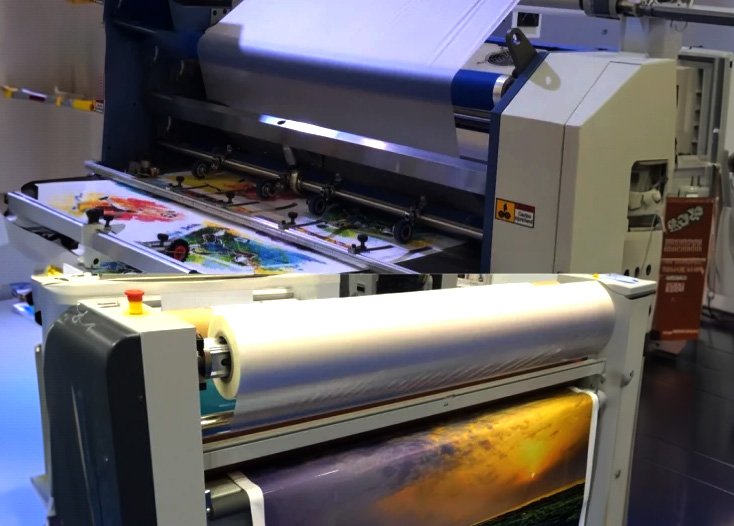
Lamination
Lamination stands as the paramount safeguard for paper. Through this finalizing procedure, printed items acquire robustness and water resistance. Moreover, it tantalizes the senses, yielding products with a glossy, professional appearance, and a gratifying tactile experience.
Types of Lamination?
- Matte Lamination
- Gloss Lamination
- Soft Touch Lamination
Matte Lamination
Matte lamination, a prevalent lamination variety, imparts a sleek, translucent matte texture to printed materials. Products laminated with matte finish are easily legible due to reduced glare, evoking a sense of sophistication. Its natural appearance enhances the perceived quality of the item, adding to its allure.
Gloss Lamination
Gloss lamination epitomizes a timeless lamination approach. Utilizing smooth plastic, gloss lamination reflects ample light, imparting a glossy sheen to items. Often applied on both sides, it offers extensive protection against damage, ensuring durability and visual appeal.
Soft Touch Lamination
Soft touch lamination epitomizes luxury in lamination, catering to both sight and touch. Resembling matte lamination in appearance, it boasts a soft, silky texture. This velvety touch elevates laminated paper products to a luxurious level, akin to the pinnacle of print finishing, all without the associated premium cost of a Rolls Royce.
Why It soft?
Unlimited support
How Does Lamination Work?
Lamination involves a straightforward process. After printing, the item passes through a machine equipped with rollers, which apply a clear plastic with adhesive properties to one or both sides of the paper. Typically, pressure and heat are employed to ensure the plastic adheres securely. Following this application, the laminated item undergoes cutting to achieve the desired size.
Laminating services typically offer various thickness options for both offset and digitally printed sheets, including 1.5 mil, 3 mil, 5 mil, and 10 mil. The 1.5 mil thickness, being the thinnest and most economical, is somewhat delicate and challenging to handle. The 3 mil thickness is widely favored for its balance of durability and affordability. Opting for a 5 mil laminate provides a mid-range option, offering sturdiness without excessive rigidity. Meanwhile, the 10 mil thickness resembles the laminate commonly found on driver’s licenses, ensuring maximum durability and protection.

